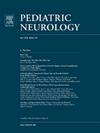新生儿脑病/缺氧缺血性脑病脑磁共振成像时间和脑损伤分类标准化的共识方法:加拿大视角
IF 3.2
3区 医学
Q2 CLINICAL NEUROLOGY
引用次数: 0
摘要
背景新生儿脑病(NE)和缺氧缺血性脑病(HIE)与显著的神经发育障碍有关。磁共振成像(MRI)是对HIE脑损伤严重程度进行分类的首选方式,但在MRI时间、方案、损伤分类和预测长期预后的评分系统方面,各机构存在相当大的差异。方法成立了一个由放射科医生和新生儿科医生组成的加拿大工作组,就脑MRI的最佳时机、合适的MRI方案以及对新生儿继发缺氧缺血性损伤的脑损伤分类和评分的统一方法达成共识。该工作组提出了一种放射学分类和评分系统,该系统既简化又修改了先前经过验证的系统。结果共识产生了标准化的MRI方案和简化的分类系统,旨在减少机构间的差异。该系统为评估脑损伤的严重程度提供了一个统一的框架,并作为预测长期神经发育结果的潜在工具。结论一旦验证,所提出的放射学分类和评分系统可以跨中心应用,以促进一致的结果比较,改善新生儿新生儿缺氧/HIE的预后,并提高长期神经发育前景的家庭咨询质量。本文章由计算机程序翻译,如有差异,请以英文原文为准。
Consensus Approach for Standardization of the Timing of Brain Magnetic Resonance Imaging and Classification of Brain Injury in Neonates With Neonatal Encephalopathy/Hypoxic-Ischemic Encephalopathy: A Canadian Perspective
Background
Neonatal encephalopathy (NE) and hypoxic–ischemic encephalopathy (HIE) are linked to significant neurodevelopmental impairments. Magnetic resonance imaging (MRI) is the preferred modality for classifying brain injury severity in HIE, yet considerable variability exists among institutions in terms of MRI timing, protocols, injury classification, and scoring systems for predicting long-term outcomes.
Methods
A Canadian taskforce comprising radiologists and neonatologists was established to develop a consensus on the optimal timing of brain MRI, appropriate MRI protocols, and a unified approach to the classification and scoring of brain injury in infants with NE secondary to hypoxic–ischemic insult. The taskforce proposed a radiological classification and scoring system that is both simplified and modified from previously validated systems.
Results
The consensus resulted in a standardized MRI protocol and a streamlined classification system designed to reduce interinstitutional variability. This proposed system offers a uniform framework for assessing the severity of brain injury and serves as a potential tool for predicting long-term neurodevelopmental outcomes.
Conclusion
Once validated, the proposed radiological classification and scoring system can be applied across centers to facilitate consistent outcome comparisons, improve prognostication for neonates with NE/HIE, and enhance the quality of family counseling regarding long-term neurodevelopmental prospects.
求助全文
通过发布文献求助,成功后即可免费获取论文全文。
去求助
来源期刊

Pediatric neurology
医学-临床神经学
CiteScore
4.80
自引率
2.60%
发文量
176
审稿时长
78 days
期刊介绍:
Pediatric Neurology publishes timely peer-reviewed clinical and research articles covering all aspects of the developing nervous system.
Pediatric Neurology features up-to-the-minute publication of the latest advances in the diagnosis, management, and treatment of pediatric neurologic disorders. The journal''s editor, E. Steve Roach, in conjunction with the team of Associate Editors, heads an internationally recognized editorial board, ensuring the most authoritative and extensive coverage of the field. Among the topics covered are: epilepsy, mitochondrial diseases, congenital malformations, chromosomopathies, peripheral neuropathies, perinatal and childhood stroke, cerebral palsy, as well as other diseases affecting the developing nervous system.
 求助内容:
求助内容: 应助结果提醒方式:
应助结果提醒方式:


